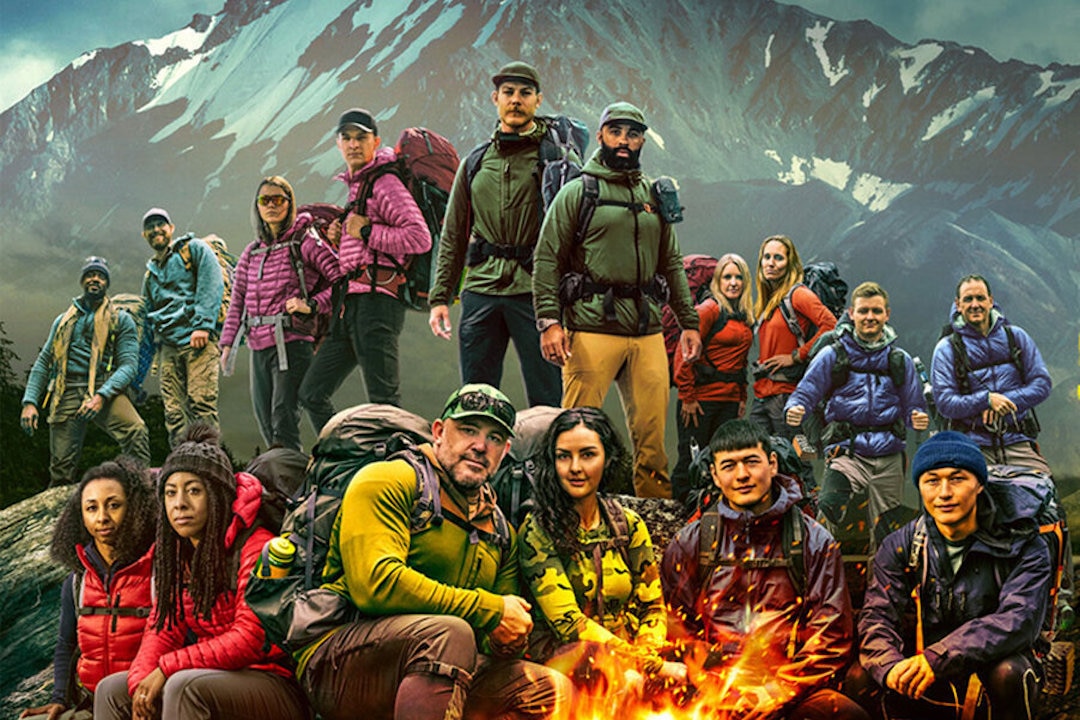Create a free profile to get unlimited access to exclusive videos, sweepstakes, and more!
The best sci-fi and survival movies to take on with 'Race to Survive: Alaska'
Alaska is scary beautiful in our imaginations and in real life.

USA’s survival competition reality show Race to Survive: Alaska pits eight teams of two against one another in a grueling race across the Alaskan wilderness. Over the course of 40 days, teams will run six different legs of a race, spanning more than 100 miles in total. There are no pre-planned routes and no guides. Teams get dropped off in one location and picked up someplace else.
How they get to their destination is up to them, but they’ll have to hike, mountain climb, raft rivers, and carry or scavenge all of the food, water, shelter, and resources they’ll need to survive. All while trying to stay ahead of their competitors and win the half a million dollar prize at the final finish line.
RELATED: ‘Race to Survive: Alaska’ survival guide: How (not) to die of hypothermia
Alaska isn’t like most places. It commands a certain reverence which can only be achieved through the perfect marriage of beauty and death. There’s a reason generations of people have looked to Alaska as the place which will fix them or consume them. It’s the sort of place where legends are made. Race to Survive: Alaska aims to capture the feeling of some of our planet’s greatest adventures, both real and imagined, by dropping 16 people directly into an environment usually reserved for horror movies.
The show premiered April 3, and new episodes air every Monday at 11:00 p.m. ET, allowing you to watch a great Alaskan adventure fold out before your eyes. While we’re waiting for the next episode to air, we’re revisiting some of our favorite fictional Alaskan adventures, just to get a sense of what we might be in for.
THE BOURNE LEGACY
The fourth film in the Jason Bourne franchise takes place three weeks after the second film, The Bourne Supremacy, and concurrently with the third film The Bourne Ultimatum. Importantly, it is the only installment in the franchise which doesn’t feature the titular Jason Bourne (Matt Damon). Instead, it follows the adventures of Aaron Cross (Jeremy Renner), an agent for Operation Outcome.
As punishment for going AWOL, Cross is sent for training in the Alaskan wilderness, where he must travel across miles of frozen landscape in search of a small cabin, stalked by wolves the entire way. That might be a death sentence for most of us, but when you’re a secret agent, wolves don’t scare you, they work for you. After Cross realizes he’s being targeted, he removes a tracking implant, forces a wolf to swallow it, then watches as the wolf is killed in his stead. We’re pretty sure that’s illegal in Alaska, unless you have the appropriate hunting or tracking license.
THE GREY
Another Alaskan adventure and another pack of killer wolves are the setting for the survival thriller, The Grey. This time, the wolves aren’t up against a highly trained secret agent, but they are up against Liam Neeson, which amounts to the same thing. Neeson plays John Ottway, a sharpshooter employed by an Alaskan oil company to protect their crews from wolf attacks.
The day after his last day on the job (isn’t that always the way?) John’s plane goes down on its way to Anchorage, dumping him and a few other survivors into an untamed expanse of land, stretching as far as the eye can see. Surviving the shock, trauma, and piercing cold is more than some of the survivors can handle, and that’s before the wolves show up. What follows is the ultimate example of what happens when an unstoppable force of nature meets the immovable object of Neeson’s John Ottway.
THE FOURTH KIND
The title of The Fourth Kind is a reference to UFO researcher J. Allen Hynek’s classification of alien encounters, laid out in his 1972 book The UFO Experience: A Scientific Inquiry. The first kind involves just the observation of an alien spaceship with no additional evidence. The second kind is similar but includes physical evidence like marks on the ground. The third kind you’re probably familiar with from Steven Spielberg’s science fiction classic, Close Encounters of the Third Kind, and involves direct contact with a UFO or alien life form. Hynek only classified those three types, but UFO enthusiasts have taken to expanding his classifications to include a fourth kind: alien abduction.
The Fourth Kind is presented to viewers as a dramatic retelling of “real” events, occurring in Nome, Alaska. We experience the story through the perspective of Dr. Abbey Tyler (Milla Jovovich) as she recalls a series of hypnotherapy sessions during which multiple patients recalled being visited by a white barn owl when they slept. Things escalate when one patient snaps, starts repeating words in a bizarre language, and holds his family at gunpoint. For him, the owl wasn’t an owl at all, but alien visitors who don’t have our best interests at heart.
BALTO
This 1995 animated classic is loosely based on the true story of the titular Siberian Husky who led a team of sled dogs on the final leg of the famous 1925 serum run to Nome, Alaska. At the time, a deadly outbreak of diphtheria was spreading across Nome and the only available treatment was an antitoxin serum several hundred miles away in Anchorage. There was an aircraft which could have made the flight, but cold temperatures caused the engine to seize, and authorities couldn’t get it to start. Instead, they decided to send the serum by train from Anchorage to Nenana, roughly 300 miles north. From there, the serum would travel the remaining 674 miles west to Nome.
More than 20 mushers and sled dog teams took part in the run, working as a relay to get the medicine to the people who needed it, many of them children, before it was too late. Gunnar Kaasen was on deck to run the second-to-last leg of the relay, from Bluff to Port Safety, Alaska, with Balto at the lead of his team. He traveled through the night in blinding winds, arriving in Port Safety at 2:00 a.m. Assuming Kaasen would be delayed by poor weather, the next musher was asleep when he arrived. Rather than wait, Kaasen pushed on, and arrived in Nome with the serum intact a few hours later.
Pictures of Kaasen and Balto were plastered all over newspapers, making them instant celebrities. Interestingly, some historians argue that Balto wasn’t actually the lead dog — a claim supported by the fact that Balto had never before been Kaasen’s lead dog — but was favored over the real lead dog, named Fox, because he had a catchier name. It might not technically be science fiction, but the dogs talk and we don't really have another way to explain that.
30 DAYS OF NIGHT
Based on the IDW comic of the same name by Steve Niles and Ben Templesmith, 30 Days of Night centers on the residents of Utqiaġvik (formerly known as Barrow), Alaska, on the eve of a month-long polar winter. In truth, the polar winter at Utqiaġvik lasts about 65 days, but that’s not narratively important. How long the night lasts doesn’t matter as much as the fact that it lasts. Shortly after the last sunset, the town is invaded by a small army of vampires looking to take advantage of the endless dark and isolated population.
The town’s sheriff, Eben Oleson (Josh Hartnett) must work with the remaining survivors to last the month and see the sunrise again. That’s something they’re pretty good at doing, all things considered. Because, in Alaska, vampires can only ever be the second scariest thing, trailing way behind the landscape itself.
Brave the Alaskan wilderness from the safety of your sofa with Race to Survive: Alaska, Mondays at 11:00 p.m. ET, on USA.














